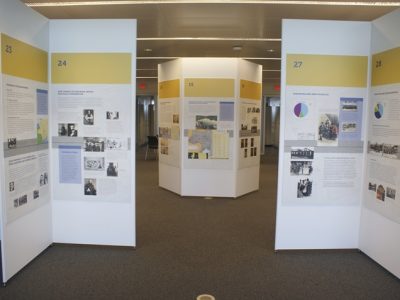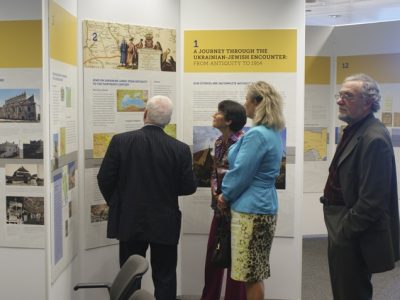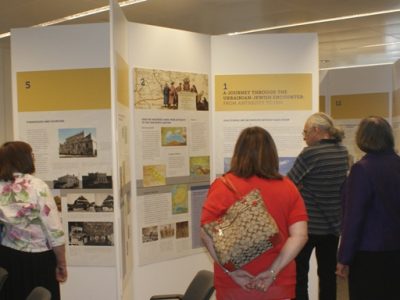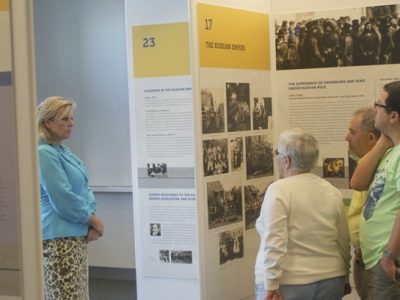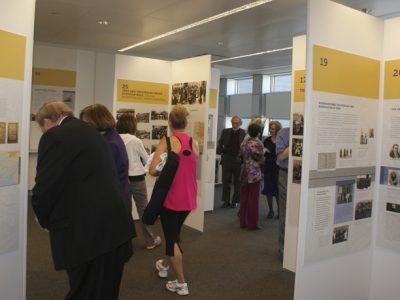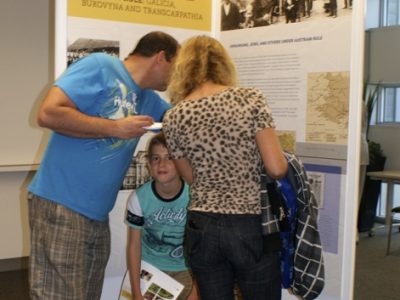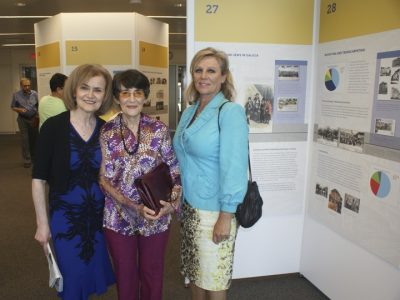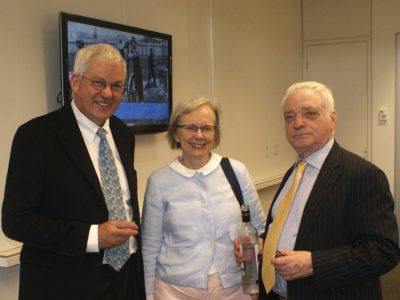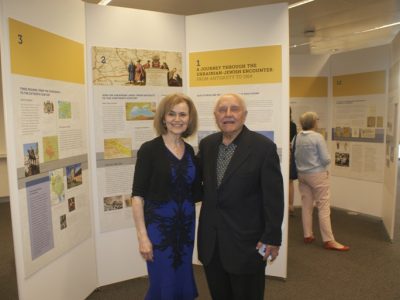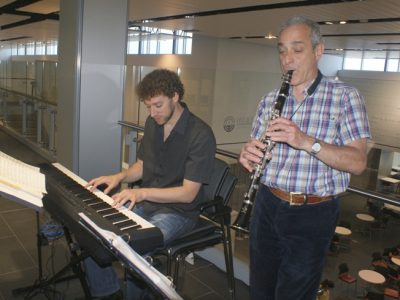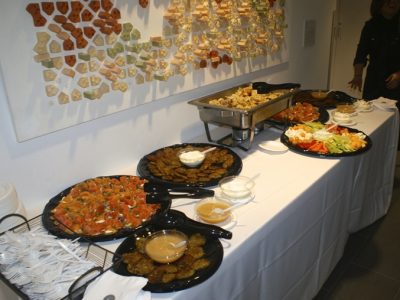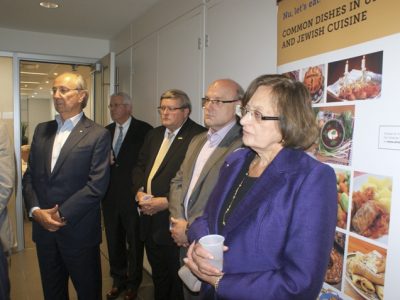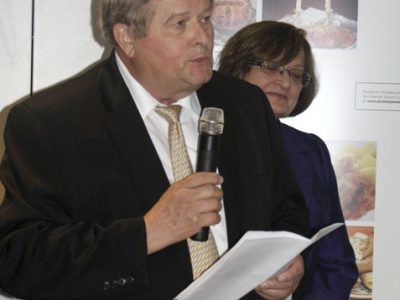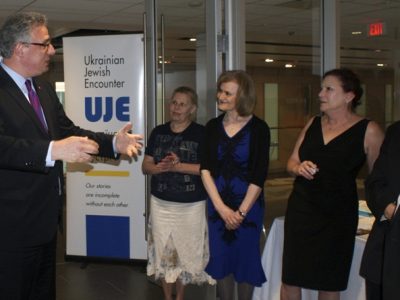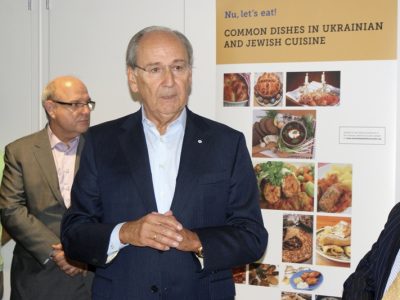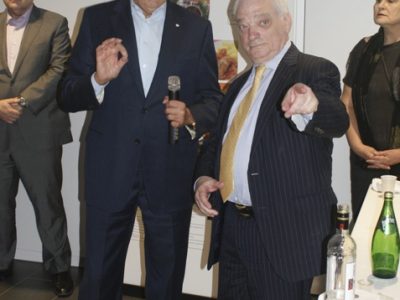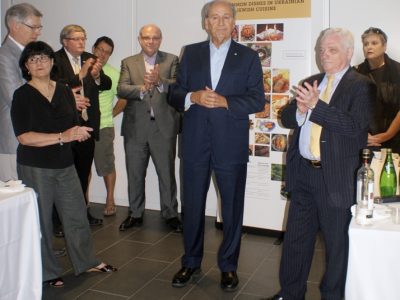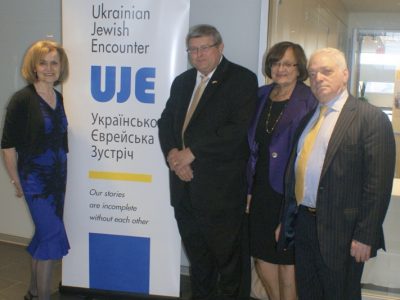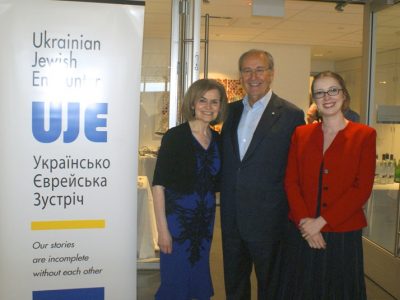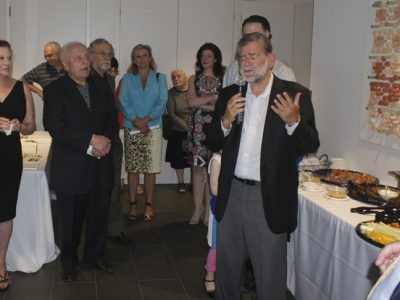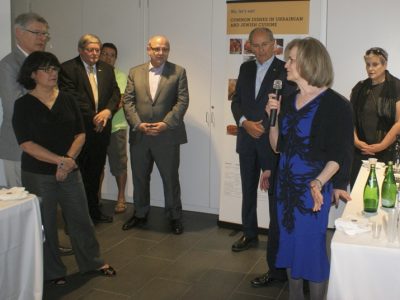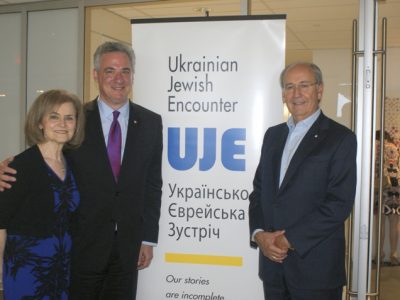UJE Travelling Exhibition on Ukrainian-Jewish History Opens in Toronto
A Journey through the Ukrainian-Jewish Encounter: From Antiquity to 1914, a travelling community exhibition, created by the Ukrainian Jewish Encounter and co-funded by the Government of Canada, premiered in Toronto at the Schwartz/Reisman Centre (Lebovic Campus, Vaughan) on Thursday, May 28. The exhibition continues at this venue until June 7. It will then travel to Winnipeg for two weeks, return to downtown Toronto July 7–19 to St. Vladimir Institute, and then travel to Edmonton and Montreal in September.
The exhibition consists of 36 panels displaying thematic texts accompanied by maps, graphics, paintings, photographs, and other images, as well as continually-playing short videos that highlight such themes as sites of the encounter (inns, taverns and marketplaces), cross-cultural influences in music and folk art, the role of artisans, and scenes of daily Jewish and Ukrainian life. Compelling period photographs accompanied by evocative music, including music recorded over one hundred years ago on wax cylinders during the 1912-14 ethnographic expeditions in the Jewish Pale of Settlement (led by S. An-sky, author of The Dybbuk), are featured in the videos.
The display panels guide the visitor through two thousand years of history, exploring such themes as the implications of the role of Jews as economic intermediaries between the largely Catholic noble estate owners and the largely Orthodox peasant serfs; divided historical memories regarding Cossack uprisings against Polish rule in the seventeenth and eighteenth centuries; the origins and extraordinary advance of Hasidism on the territory of Ukraine; the flourishing Hebrew/Yiddish publishing scene and literary renaissance; perceptions of Jews among Ukrainian literary figures and leaders of the Ukrainian national awakening and the depiction of Ukrainians in Jewish literature.
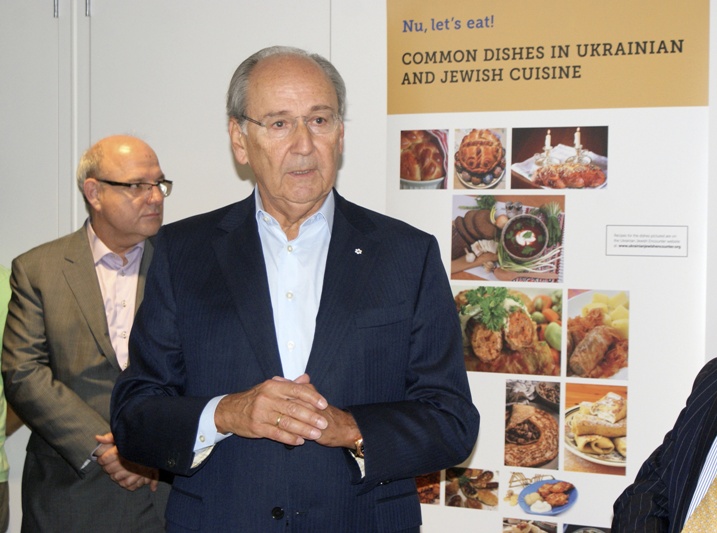
The opening reception on Thursday featured live Jewish and Ukrainian music, performed by Jonno Lightstone on clarinet and Eric Stein (artistic director for Toronto's Ashkenaz Festival) on keyboard. The music and the regionally inspired cuisine served at the reception, including blintzes/mlyntsi/nalysnyky, latkes/deruny, and varenyky/pyrohy, highlighted the mutual cultural influences over centuries of co-existence.
Thoughtful remarks were offered by UJE founder and Chair James Temerty, Member of Parliament Mark Adler (representing the Government of Canada), Victor Hetmanczuk (President, Canada Ukraine Foundation and member of the National Board of Directors of the Ukrainian Canadian Congress), and Mark Freiman (Past President of the Canadian Jewish Congress).
Alti Rodal, UJE's Co-Director and the curator of the exhibition, outlined three significant messages from the exhibition:
- Jews have been present on Ukrainian lands for two millennia and over this period Jewish life and culture flourished on these lands (for example, there was a lively, Slavic-speaking Jewish community and quarter in Kyivan Rus in the tenth century, one that corresponded with the Jewish community in Cairo.
- Jews were significantly influenced by the majority Ukrainian population, in particular through folklore, art, architecture, language, music, and cuisine.
- The stories of the two peoples are intertwined – the history of each incomplete without the history of the other.
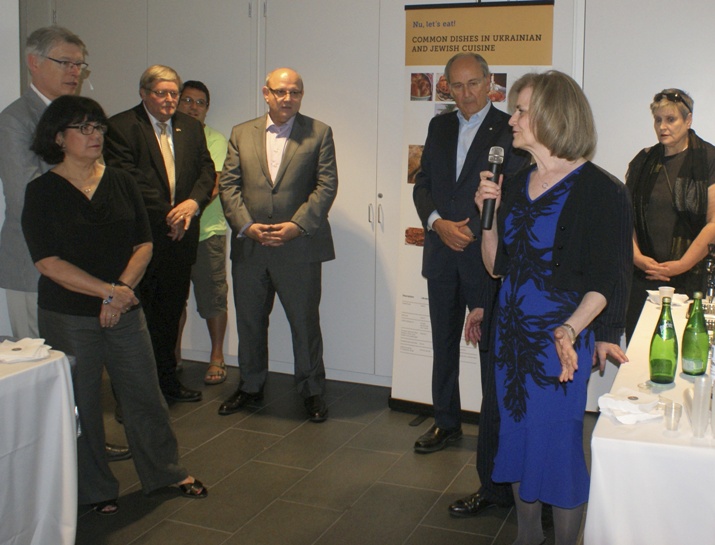
Rodal noted that there is much to be learned from the fresh approach taken in the exhibition, featuring an integrated narrative of these two stateless peoples. The exhibition treats their historical experience together, in all its complexity—during periods of crisis and intermittent violence, as well as long periods of normal neighbourly co-existence, conducive to creating and sharing enduring cultures. This approach may offer a model for addressing divided memories and entrenched stereotypes by the incorporation of differing perspectives on contested issues, taking into account the broader context and impact of changing regimes and empires, and distilling germane information in an accessible visual format.
View our gallery of the opening:
SONY DSC
SONY DSC
SONY DSC
SONY DSC
SONY DSC
SONY DSC
SONY DSC
SONY DSC
SONY DSC
SONY DSC
SONY DSC
SONY DSC
SONY DSC
SONY DSC
SONY DSC
SONY DSC
SONY DSC
Guided tours of the exhibition at the Schwartz/Reisman Centre can be arranged with Dr. Helena Yakovlev-Golani at [email protected]
The exhibition is accessible to people in wheelchairs. Admission is free.
All the photos were taken by Helena Yakovlev-Golani.







